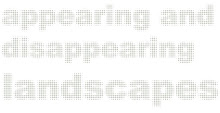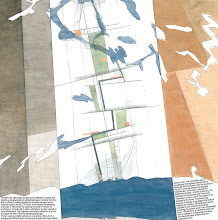Vulnerability is one of the basic components in conceptions of survival. It is an aggregate measurement that indicates susceptibility to be harmed. Vulnerability is an intimate term in the sense that it is rooted in deep human experiences. At the same time it applies to systems of all scales from the smallest biotope to global systems, on all categories and all sectors of society. It floats through language, adapting content from the given context and it always occurs with specific sets of associations borrowed from the context it appears in.
In mosaic::region we related to vulnerability issues in this way: Vulnerability mapping is a part of our anti-generic mindset where plurality and diversity is crucial, and where the mosaic’s unique strength is to be grown and processed. This applies of course the maintenance and protection of a diverse nature, but it applies just as fully to the Sociotopes of different origins that are vulnerable to economical and political pressure and change. In both cases, it is all about strengthening by linking together and open up for new opportunities, rather than to preserve. Through a hyper mapping of the super normal the survey answers with a flexible and evolving strategy, where the vulnerable, first and foremost are protected by active intervention, and not primarily through boundaries.
Vulnerability is the new Geography
While the vulnerability on the personal level is universal, the geography of vulnerability is specific. Stresses and resources are unequally distributed. Global forces and local dynamics interact and produce varying regional conditions. When this information is put together, a new geography is revealed, a geography where vulnerability comes in the foreground. This cartography spans from the local to the international. Researchers enter this geography from different disciplines, with different tools, traditions and interest. Vulnerability mapping and assessments are produced in all sectors of society. They are made to provide decision makers with necessary knowledge to protect and strengthen vulnerable social, economic and natural systems. When the impact from climate change and variations becomes manifest, it comes on top of already existing stresses, interacts with them and makes them worse. As the insight of climate change began to make its presence throughout the 1990s, vulnerability assessments began to focus on vulnerability in relation to environmental changes combined with socio-economic vulnerability of individuals and groups.
IPCC’s 4th assasment 2007, Working Group II Report Impacts, Adaptation and Vulnerability provides an overview on the geography of vulnerability under climate change. Here they use a specific definition on the term vulnerability in relation to adaptive capacity:
Adaptive capacity is the ability of a system to adjust to climate change (including climate variability and extremes) to moderate potential damages, to take advantage of opportunities, or to cope with the consequences.Vulnerability is the degree to which a system is susceptible to, and unable to cope with, adverse effects of climate change, including climate variability and extremes. Vulnerability is a function of the character, magnitude, and rate of climate change and variation to which a system is exposed, its sensitivity, and its adaptive capacity.
The impacts of climate change have big regional variations, but are registered in the whole biosphere. Developing countries, those who have contributed least to the co2 emissions, are worst affected by the consequences. Large and growing populations are climate refugees. The human potential of entire regions is used up in a daily fight for survival. When a country is preoccupied to tackle drought, flood, famine and conflict, it loses the creative expression of entire generations and the potential to work their way out of poverty and bring the world forward.
Vulnerable potentials for change
The concept of vulnerability has a built-in appeal to do something about a situation; it is a concept that mobilizes into action. This makes it a political tool. It is implicit that if something is highlighted as vulnerable, it is entitled to some form of protection. How this call for action are received, the ways decision makers relate to the information, will be dominant in terms of priorities. In planning and politics there will always be overlapping interests and needs in relation to territory and economy. When resources are under pressure, sector interests will impact on priorities and policy guidelines. Vulnerable landscapes often end up as the loosing part in priorities.
National states do not only attempt to protect their territory, population and production, but also the global systems that they feed on. If those systems are based on global injustice it is inevitable that they have negative impact in other regions of the world. Energy conflicts are an example of this: All big military and political conflicts from First World War up to now have been related to the control of the world’s oil-reserves. ( Helge Ryggvik)
A system that is not sustainable will over time become vulnerable. Biological, social, economic, technical and cultural systems overlap and affect each other in structural dependencies. Many of the systems we are dependent on are unsustainable, and as a consequence the vulnerability of communities and ecosystems increases.
Decision makers are often ignorant to undercurrents in society as opportunities to redefine the future. When processes are closed, structured and formalized, the experimental and not yet displayed potentials are ruled out. It is crucial to open up and create a reception apparatus for vulnerable initiatives as potentials for change. We need to find the ideas that is in the making, under the surface, the things that we don’t yet know. To draw what exists out of the shadows of what we know. Projects need to be extremely observant and proactive in pointing out new directions, to meet future challenges which can only be met through a hitherto unseen dynamism and flexibility in planning, international cooperation and development.
Kjerstin Uhre
Tuesday, January 1, 2002
Vulnerability reading
Subscribe to:
Post Comments (Atom)





















No comments:
Post a Comment